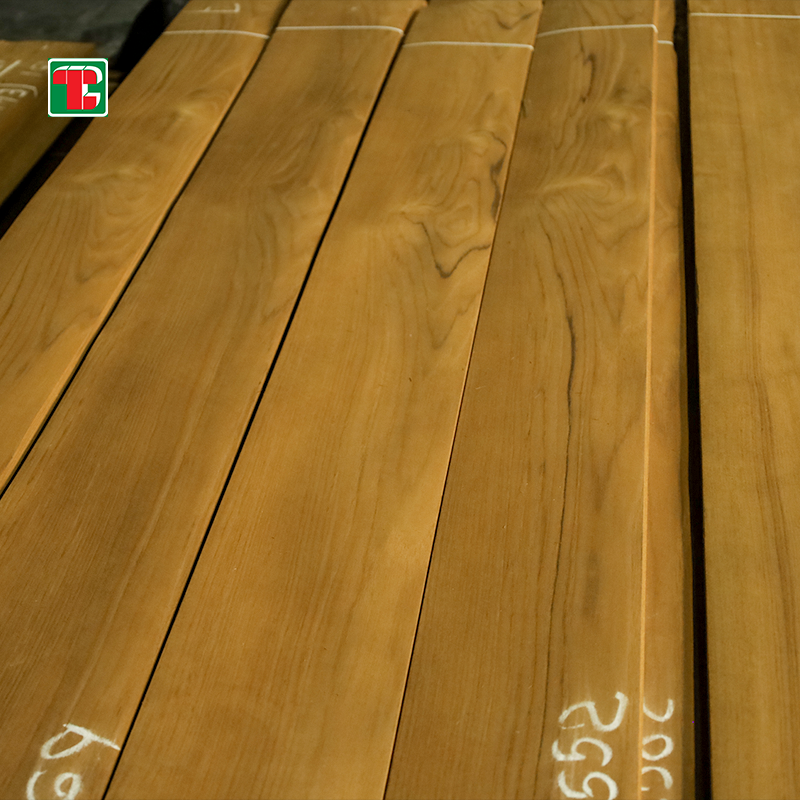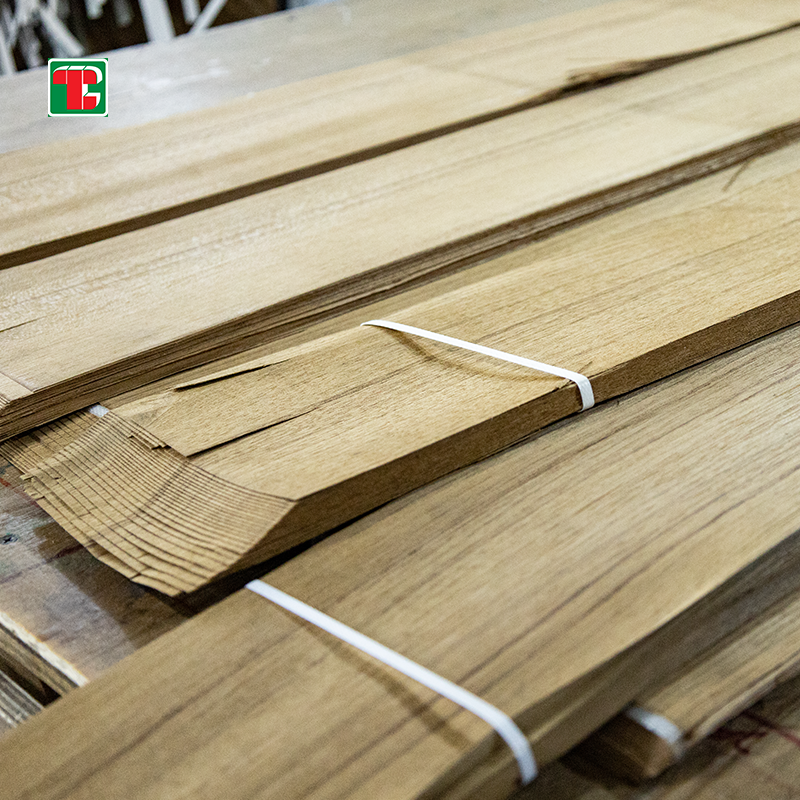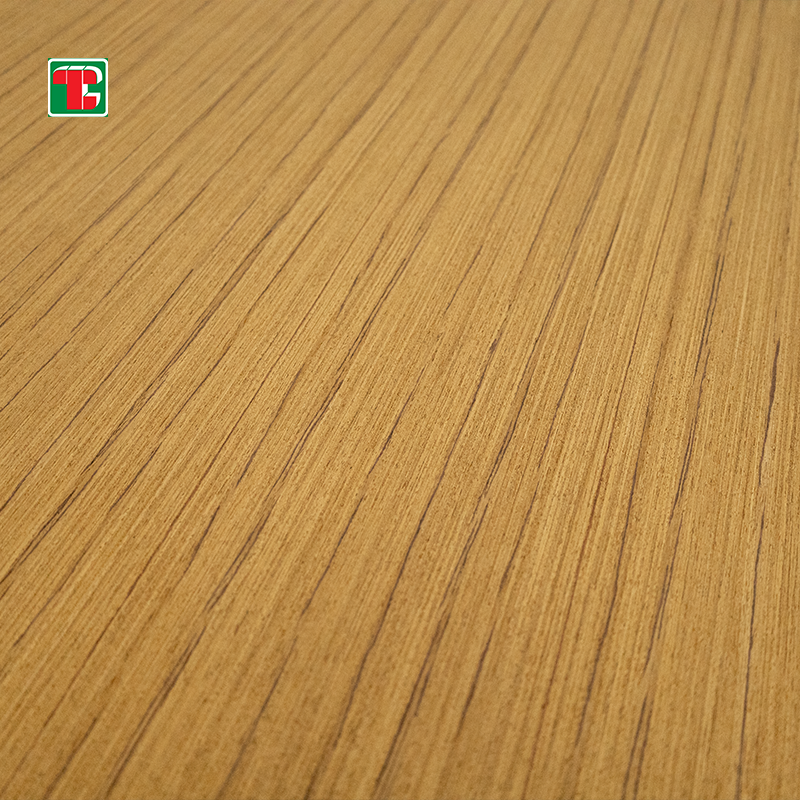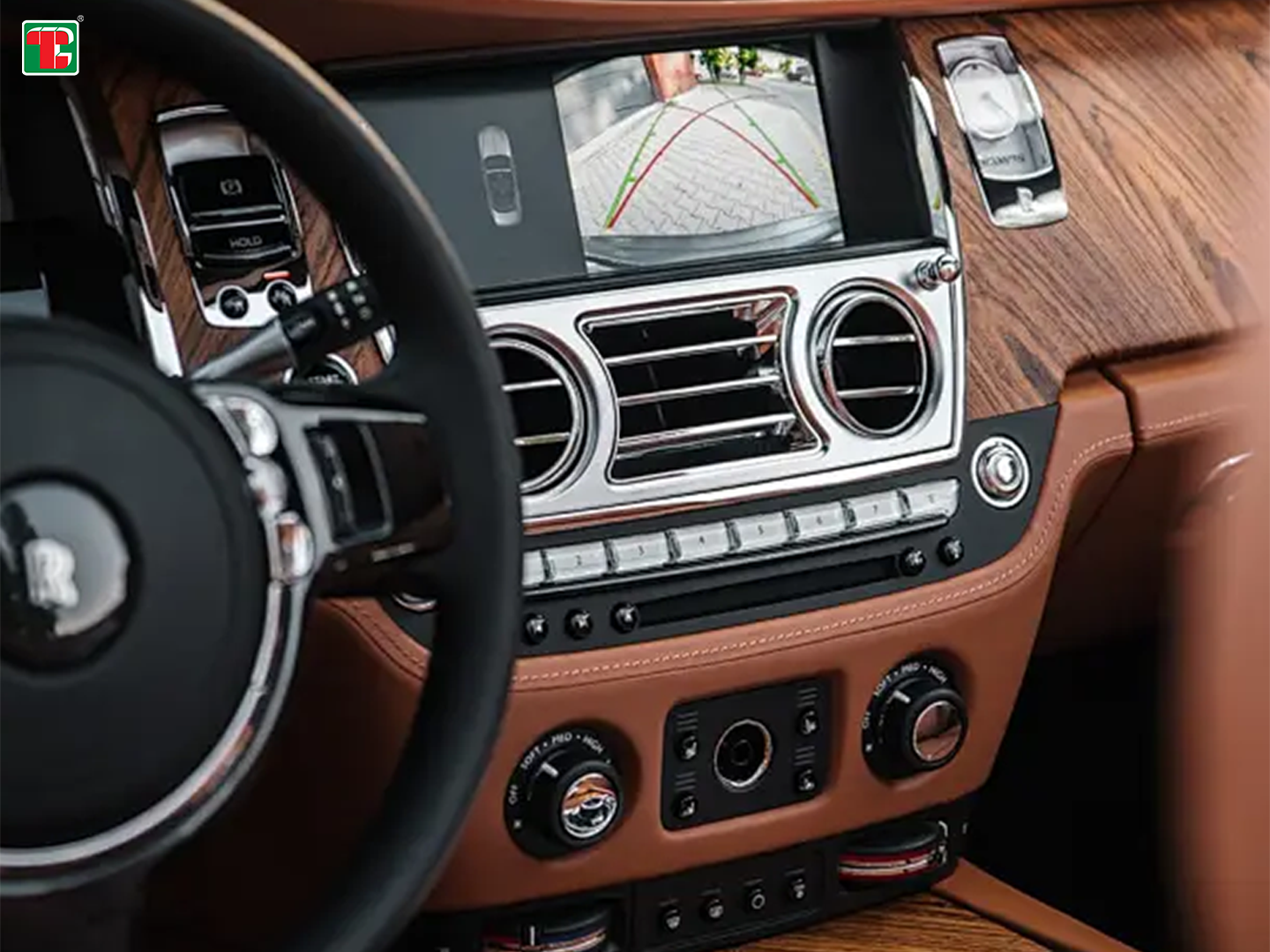Teak veneer, a timeless and revered material in the realm of woodworking, embodies a perfect marriage of beauty and durability. Derived from the teak tree (Tectona grandis), teak veneer offers an exquisite blend of rich golden-brown hues, intricate grain patterns, and natural oils that imbue it with unparalleled resilience and aesthetic appeal.
Characterized by its thin layers, teak veneer serves as a versatile solution for enhancing furniture surfaces, interior décor elements, and architectural features. Its ability to add warmth, sophistication, and a touch of luxury to any space has made it a favorite among designers, craftsmen, and homeowners alike.
Teak veneer comes in various classifications, including quarter-cut, crown-cut, and rift-cut veneers, each offering distinct grain patterns and visual effects. Whether used in furniture manufacturing, interior design projects, or marine applications, teak veneer elevates the ambiance and adds a sense of refinement to any environment.
The quality of teak veneer is influenced by several factors, such as its origin, cutting methods, thickness, matching techniques, and backing materials. Authenticity is key, and discerning consumers value certification labels and documentation from reputable suppliers to ensure the genuineness and superior quality of their teak veneer products.
Characteristics of Teak Veneer:
Natural Teak Veneer:
a. Teak Veneer in Mountain Grain:
Mountain grain teak veneer exhibits a distinctive grain pattern resembling the rugged contours of mountain landscapes.
The grain pattern features irregular, undulating lines and knots, adding character and depth to the veneer.
Mountain grain teak veneer is prized for its rustic charm and natural aesthetic, making it a popular choice for rustic-themed furniture and interior design projects.

b. Teak Veneer in Straight Grain:
Straight grain teak veneer showcases a uniform and linear grain pattern, with straight, parallel lines running along the length of the veneer.
The grain pattern is characterized by its simplicity and elegance, lending a sense of refinement and sophistication to surfaces.
Straight grain teak veneer is favored for its versatile appeal, suitable for both contemporary and traditional design schemes, from sleek modern interiors to classic furniture pieces.

Engineered teak veneer is a composite material crafted by bonding thinly sliced teak wood veneer onto a stable substrate, such as plywood or MDF (Medium Density Fiberboard).
Engineered teak veneer offers enhanced stability, uniformity, and cost-effectiveness compared to natural teak veneer.
This type of veneer allows for greater flexibility in design and application, making it suitable for large-scale projects and custom installations.
Engineered teak veneer retains the natural beauty and characteristics of teak wood while providing improved consistency and durability, making it a practical choice for various woodworking applications.

Factors Influencing Teak Wood Quality:
a. Origin: The quality of teak wood varies based on its geographical origin, with Burmese teak being highly prized for its superior properties.
b. Natural Forests vs. Plantations: Teak wood sourced from natural forests tends to have higher density and durability compared to wood from plantations.
c. Age of the Tree: Older teak trees exhibit enhanced properties such as increased oil content, pronounced mineral lines, and improved resistance to decay and insects.
d. Part of the Tree: Wood sourced from the trunk of the teak tree is of higher quality compared to that from branches or sapwood.
e. Drying Techniques: Proper drying methods, such as natural air drying, help retain the wood's natural oils and prevent structural damage, ensuring long-term durability and stability.
Notable Applications of Burmese Teak:
a. Decking Material: The deck of the Titanic was famously constructed using teak wood for its durability and resistance to water.

b. Luxury Automotive Interiors: Rolls-Royce commemorated its 100th anniversary with the Rolls-Royce 100EX, featuring exquisite teak wood accents in its interior design.

d. Cultural Heritage: The Golden Teak Palace in Thailand, built during the reign of King Rama V, exemplifies the grandeur and craftsmanship of teak wood architecture.

Identifying Authentic Teak Wood:
a. Visual Inspection: Genuine teak wood exhibits clear grain patterns and a smooth, oily surface texture.
b. Odor Test: Teak wood emits a distinct acidic odor when burned, unlike synthetic substitutes.
c. Water Absorption: Authentic teak wood repels water and forms droplets on its surface, indicating its natural oils and moisture resistance.
d. Burning Test: Burning teak wood produces thick smoke and leaves behind a fine ash residue, distinguishing it from counterfeit materials.
Post time: May-20-2024







